Not all autism awareness merchandise tells the same story. While April brings a flood of blue puzzle piece products to store shelves, many autistic adults are quietly seeking something different — clothing that feels comfortable on their skin, symbols that reflect their identity with pride, and brands that understand their lived experience.
The truth is, much of mainstream autism awareness merchandise misses the mark entirely. From scratchy fabrics that trigger sensory sensitivities to outdated symbols that many in the community find harmful, these products often create more barriers than bridges.
But there’s a growing movement of autistic-owned businesses and thoughtful allies creating merchandise that actually serves the community. These products prioritize comfort, celebrate neurodiversity, and center the voices of autistic people themselves.
Key Takeaways
- Not all autism awareness merchandise is helpful — many mass-market products use outdated symbols or messages that don’t reflect the autistic community’s values
- Sensory-friendly, identity-affirming products offer comfort and visibility without compromise
- The puzzle piece symbol is controversial; many autistic adults prefer alternatives like the neurodiversity infinity loop, sunflower, or identity-first phrases
- Autistic-owned brands like HeyASD offer meaningful alternatives that center lived experience and community pride
- Wearing autism-positive merchandise can be a form of advocacy, self-expression, or comfort — not just a once-a-year gesture
- Choosing where you shop matters — supporting autistic creators and ethical brands makes a bigger impact than buying from corporate “awareness” campaigns
Rethinking Autism Awareness Merchandise
The meaning of autism awareness merchandise has evolved significantly over the past two decades. Originally, such products were designed to increase public recognition of autism spectrum disorder, typically using universal symbols and broad messages to foster basic visibility. The goal was simple: create awareness that autism exists.
However, with the rise of advocacy from within the autistic community, there’s been heightened scrutiny over what many now label as “performative” autism awareness products. These items signal support without addressing real needs, accurate representation, or material benefit to autistic people. The major critique? They often prioritize visual symbols and slogans over substance and inclusivity.
According to the CDC, autism affects 1 in 36 children in the U.S., but statistics alone don’t tell the whole story. Behind every number is a diverse, vibrant individual navigating a world not built for them. Good merchandise should reflect that reality — not reduce it.
The difference between performative merchandise and empowering merchandise comes down to one key question: Does this product center the voices and preferences of autistic people themselves?
Empowering merchandise is created by autistic designers, uses identity-first language, addresses sensory needs, and distinguishes between “awareness” (which can be passive) and “acceptance” or “inclusion” (which carry more active, empowering connotations).
Lived experience — involving autistic individuals directly in concept, design, and messaging — is now recognized as essential for authentic and effective autism merchandise. Many leading voices in the autistic community advocate for collaboration and ownership, ensuring that products reflect actual needs and aspirations rather than merely serving as fundraising tools.
Symbols That Respect the Community
The Puzzle Piece: Understanding the Controversy
The puzzle piece was first used by the UK’s National Autistic Society in 1963, chosen to represent the “mystery” and “complexity” of autism. Over time, this symbol was adopted internationally, most notably by Autism Speaks, often rendered in bright primary colors or as a blue ribbon.
Critics argue the puzzle piece frames autistic people as “missing” or “incomplete,” reinforcing stigmas of brokenness or dependency. The blue coloring further centers the male experience and aligns with campaigns like “Light It Up Blue,” which has come under criticism for failing to adequately represent autistic adults and for controversial positions on behavioral intervention.
Community-Preferred Alternatives
Many autistic adults and advocacy groups now prefer a range of alternative symbols:
|
Symbol |
Meaning |
Why It’s Preferred |
|---|---|---|
|
Neurodiversity Infinity Loop |
Multicolored infinity symbol representing diversity and infinite variation |
Inclusive, positive framing of neurological differences |
|
Gold (Au) |
Chemical symbol used as a pun (“Au-tism”) |
Represents value and serves as a pride color |
|
Sunflower |
Symbol for invisible disabilities |
Shows welcome and understanding in public spaces |
|
Identity-First Language |
Phrases like “Autistic and Proud” or “I Am Autistic” |
Prioritizes self-advocacy and community pride |
When selecting a symbol, alignment with community preferences and feedback from autistic individuals is key. Symbols that focus on empowerment, celebration of difference, and visibility without stigma receive the most positive response from the autism spectrum community.
Sensory-Friendly Merchandise That Feels as Good as It Looks
Comfort for autistic individuals often goes far beyond aesthetics. Sensory sensitivities are a core autistic trait for many, impacting daily clothing and accessory choices. This is where most mainstream autism awareness shirts and other products fall short.
Autistic-friendly merchandise should prioritize:
- Tagless, soft, breathable fabrics that don’t irritate skin or create uncomfortable pressure
- Inclusive sizing and gender-neutral cuts that offer flexibility for all body types and gender identities
- Adaptive features such as flat seams, wide necks, and easy closures, reducing sensory triggers and supporting independence
- Fidget-friendly jewelry and accessories that serve as both decoration and a calming tool
Products designed from the ground up with autistic bodies and regulation needs in mind distinguish themselves from generic awareness items which may look supportive but provoke discomfort or distress. These considerations are often overlooked in mass-market merchandise, which tends to use standard garment templates without understanding the specific needs of the people they claim to support.
Types of Merchandise That Empower
Recent trends in autism-positive products show a shift from symbolic, single-use items to meaningful, everyday products that serve both expressive and practical needs:
Apparel
Autism awareness t-shirts, hoodies, and long sleeves with affirming slogans like “Neurodivergent Pride” or “Different, Not Less” are increasingly popular. The best items are made with comfort-first materials and tagless labels that don’t add sensory stress to daily life.
Jewelry
Subtle, often fidget-oriented jewelry, dog tags, and bracelets serve a dual purpose. Sometimes engraved with affirming or safety-related messaging, or sunflowers, jewelry is popular for its role as both self-regulation tool and statement piece.
Accessories
Stickers, pins, buttons, and magnets featuring positive phrases, neurodiversity symbols, or pronouns allow for portable, visible self-advocacy on bags, laptops, and planners. These small items can contribute to a sense of community and belonging.
Home Décor
Calming wall art, sensory blankets,weighted pillows, and visual timers help autistic individuals regulate their sensory environment while expressing identity. Quality home items create spaces where people can truly be themselves.
Custom Options
Personalized name tags, affirmation cards, and custom-colored products let customers choose messages and aesthetics that reflect their specific needs. This kind of customization shows understanding that autism presents differently for each individual.
Merchandise that combines practical utility with self-expression is in growing demand — a trend reflective of broader neurodiversity-affirming shifts in the market.
When & Why People Wear Autism Merchandise
While awareness campaigns often peak in April (Autism Acceptance Month), autistic-positive merchandise is increasingly worn year-round. The motivations extend far beyond temporary awareness:
- Everyday comfort: Sensory-friendly apparel is valued for its practicality, especially by autistic adults who must navigate challenging sensory environments daily
- Connection and visibility: Wearing visible symbols can identify allies or signal safety to other autistic people, aiding in social connection and support
- Self-advocacy: For many, especially those diagnosed later in life, visible merchandise becomes a tool for asserting identity and challenging stereotypes
- Community events and advocacy: Marches, conferences, or activism events frequently feature coordinated apparel
- Allyship: Non-autistic parents, siblings, and professionals may wear supportive merchandise to show solidarity, though many in the community stress that such items should be respectful and reflect current, affirming symbols
The key difference between wearing autism merchandise as an autistic adult versus as an ally often comes down to lived experience. For autistic individuals, these items represent personal identity and self-advocacy. For allies, they should represent support without speaking over autistic voices.
How to Choose Merchandise That Actually Supports the Community
To ensure your purchase actually benefits rather than exploits the autism community, look for these qualities:
What to Look For
- Autistic-owned or neurodivergent-led brands: Such companies are more likely to reflect lived experience and contribute positively to the community
- Transparent donation and ethics policies: Credible brands disclose whether proceeds support advocacy work and are open about production practices
- Affirming, respectful messaging: Companies should avoid infantilizing language and use identity-first phrases that reflect community preferences
- Community feedback and co-design: The best products are created with direct input from autistic people
- Customizability and inclusivity: Items should be available in a wide range of sizes, colors, and customization options
Red Flags to Avoid
- Excessive reliance on the puzzle piece without community context
- Use of blue-only color schemes tied to controversial campaigns
- Generic mass-produced designs with no clear community involvement
- Products associated with “Light It Up Blue” or organizations that don’t center autistic voices
- Infantilizing language like “warrior mom” or “defeat autism”
- Lack of transparency about where proceeds go or who benefits
When you shop thoughtfully, your purchase becomes a form of advocacy that can contribute to positive change within the autism community.
Our Approach to Autism Merchandise
HeyASD distinguishes itself in the market through several key practices that center the autistic community:
Community ownership: Products are conceptualized and created by autistic individuals, ensuring that lived experience guides every design and messaging decision. This isn’t just consultation — it’s ownership.
Sensory-first production: The clothing line prioritizes soft, tagless, breathable fabrics that offer both sensory comfort and style. Every design choice considers how the item will feel on an autistic person’s body throughout their day.
Ethical production: Attention is paid to transparent sourcing, responsible labor practices, and sustainable materials where possible. The mission extends beyond autism awareness to broader social responsibility.
Affirming symbols: HeyASD prioritizes neurodiversity infinity loops, gold accents, and identity-affirming slogans over puzzle pieces or blue motifs that may not resonate with the community.
Self-expression focus: Merchandise allows for personalization — such as custom name imprinting, pronoun pins, or choice of color and symbol — enabling autistic customers to express themselves authentically rather than conforming to a single narrative.
Community reinvestment: HeyASD reinvests a portion of profits back into autistic community initiatives, support networks, and advocacy work rather than donating to third-party organizations with controversial histories.
This approach contrasts sharply with large corporate initiatives, which often prioritize brand visibility over direct community impact. The difference shows in every product, from the fabric choice to the final message.
Top Product Ideas and Gift Categories
If you’re looking to shop for meaningful autism merchandise, these categories represent the current trends in community-preferred items:
Essential Apparel
Sensory-friendly t-shirts and hoodies with neurodiversity messages, available in a range of sizes and fabric options. Quality matters more than quantity when it comes to clothing that will be worn regularly.
Fidget Jewelry
Necklaces or bracelets designed to double as discreet self-regulation aids. These pieces serve both aesthetic and functional purposes, making them ideal for workplace or social settings.
Identity Expression
Customizable buttons and pins featuring pronouns, affirming language, or diagnostic status. These small accessories allow for subtle or bold self-advocacy depending on the wearer’s comfort level.
Sensory Home Items
Sensory & weighted blankets, lap pads, and textured pillows designed for focus and calming. These items create supportive environments while expressing personal style.
Art and Stickers
Featuring neurodiversity symbols, gold accents, and positive phrases, stickers are perfect for personalizing spaces, devices, or belongings. They’re also accessible price points for people wanting to try community-preferred symbols.
Custom Orders
The ability to collaborate on colors, symbols, or text reflects a universal design mindset that truly serves individual needs. Custom options show that a brand understands autism presents differently for each person.
Socks and Accessories
Often overlooked, sensory-friendly socks and other daily accessories can make a significant difference in comfort while offering subtle ways to express identity or connect with community.
Gifts for Autistic Adults
Looking for thoughtful gifts that truly resonate with autistic adults? Explore our carefully curated collection of gifts for autistic adults featuring sensory-friendly, identity-affirming, and practical items designed with community input.
Not sure where to start? Check out our comprehensive Guide to the Best Gifts for Autistic Adults to find meaningful ideas that combine comfort, self-expression, and support for everyday life.
Problems with Mainstream Awareness Products
Many mainstream autism awareness items fail the community on several critical dimensions:
Outdated symbolism: They often use the puzzle piece or blue color scheme without regard for current community sentiment, potentially perpetuating negative stereotypes that frame autistic people as broken or incomplete.
Profit without participation: Products are frequently mass-produced and sold for profit with minimal transparency about funding or involvement with actual autistic people. The awareness they create may be superficial at best.
Sensory hostility: Designs are rarely sensory-friendly or adaptive, and may actually cause discomfort or exclusion for the very people they claim to support. Scratchy tags, rough seams, or uncomfortable fits defeat the purpose entirely.
Caregiver-centered messaging: Many products center families or caregivers as “heroes” rather than empowering autistic individuals themselves. This perpetuates the narrative that autism is primarily about other people’s experiences.
Controversial funding: Funds raised from sales sometimes benefit large organizations with histories or priorities not aligned with self-advocacy, potentially working against the interests of autistic people.
April-only marketing: Merchandise may only be promoted during Autism Awareness Month, missing the day-to-day lived experience of autistic people seeking community and comfort year-round.
Understanding these problems helps consumers make better choices about where to invest their money and attention.
Moving Forward: Merchandise That Matters
The evolution of autism awareness merchandise reflects a broader shift in how society understands and values neurodiversity. As we move beyond simple awareness toward genuine acceptance and inclusion, the products we choose to buy and wear become statements about the kind of world we want to create.
Every time you choose sensory-friendly fabric over scratchy awareness shirts, community-preferred symbols over outdated puzzles, or autistic-owned businesses over corporate campaigns, you contribute to a marketplace that truly serves the people it claims to support.
Your purchase decisions have power. Use them to support autistic creators, prioritize comfort and dignity, and help build a world where being autistic is celebrated rather than simply “aware” of. The autism community has been clear about what they want and need — it’s time for the rest of us to listen and shop accordingly.
When you’re ready to explore autism merchandise that prioritizes comfort, community, and authentic representation, check out what autistic-owned businesses like HeyASD are creating. Because awareness without action is just noise — but thoughtful support can create real change, one comfortable t-shirt at a time.

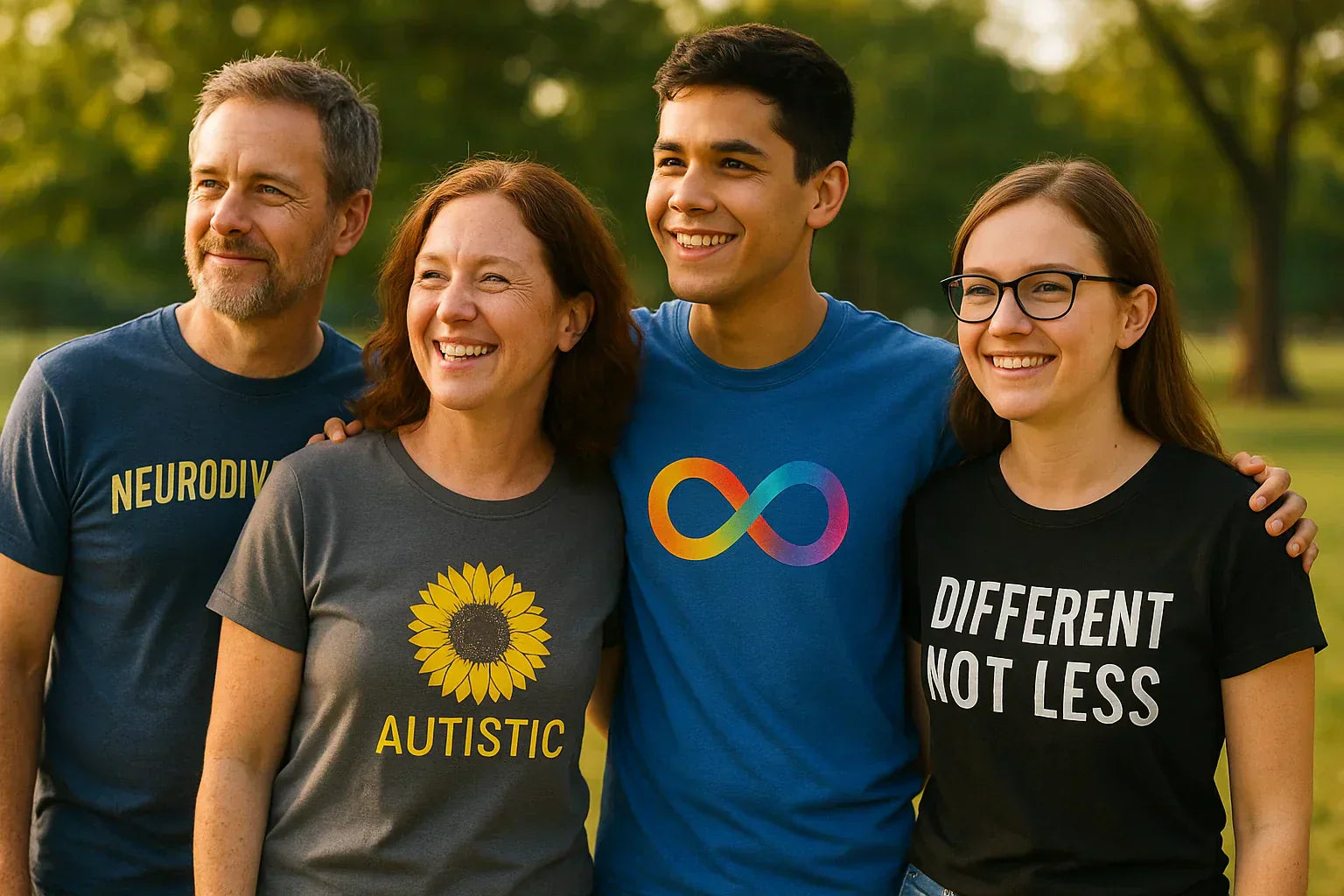
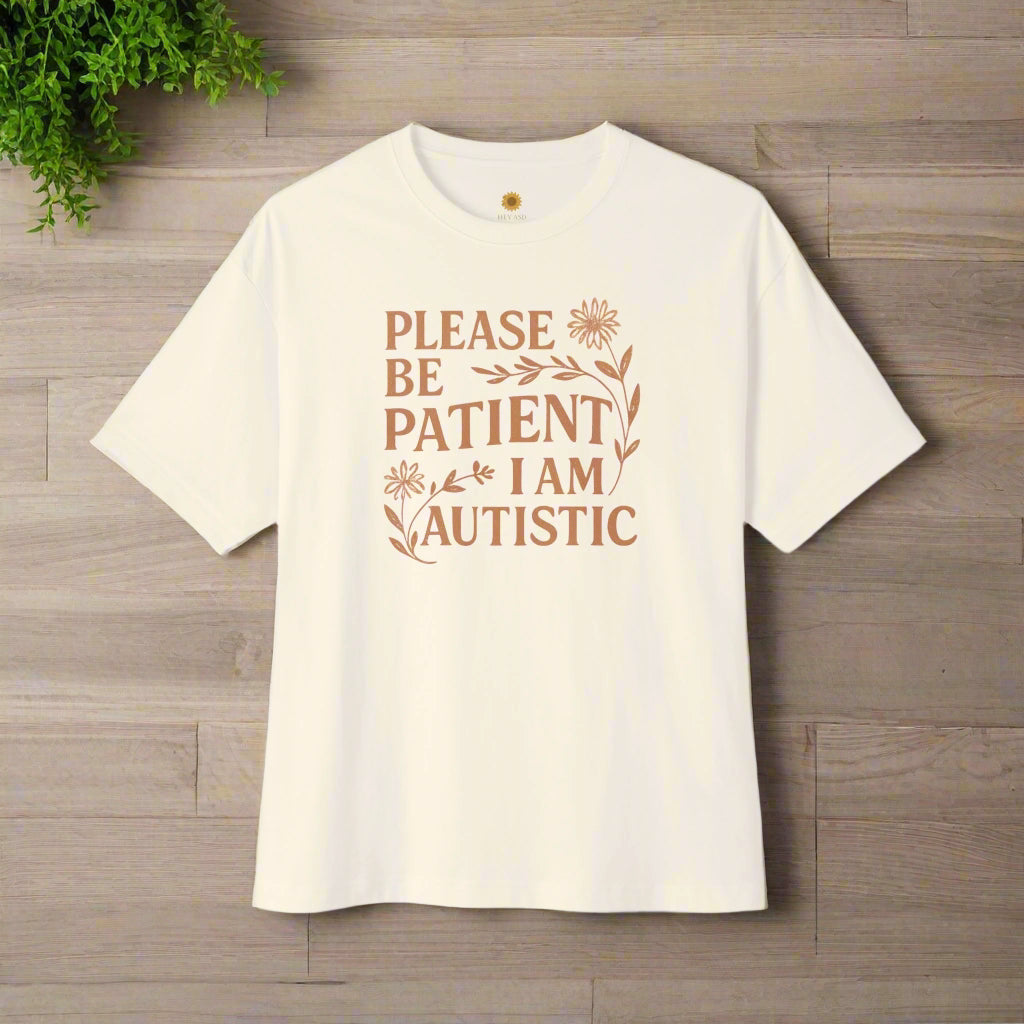
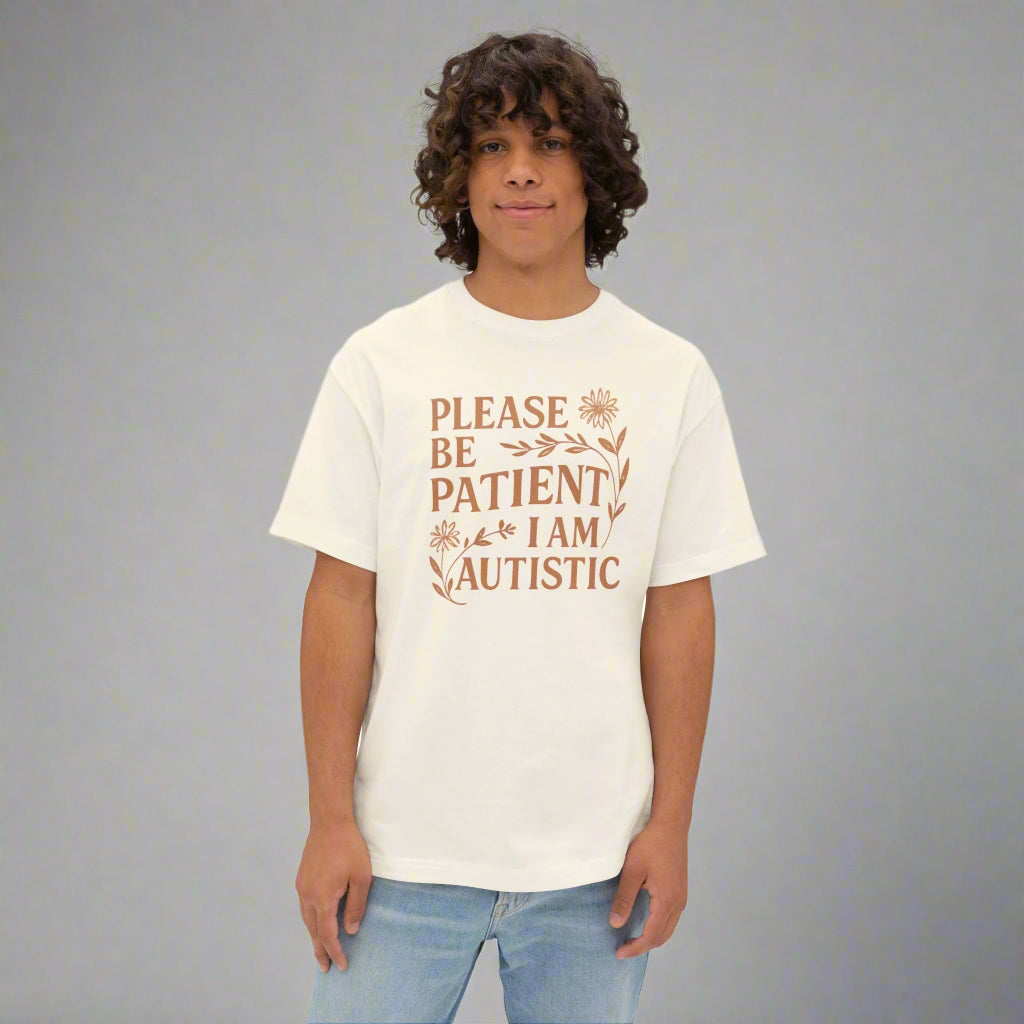
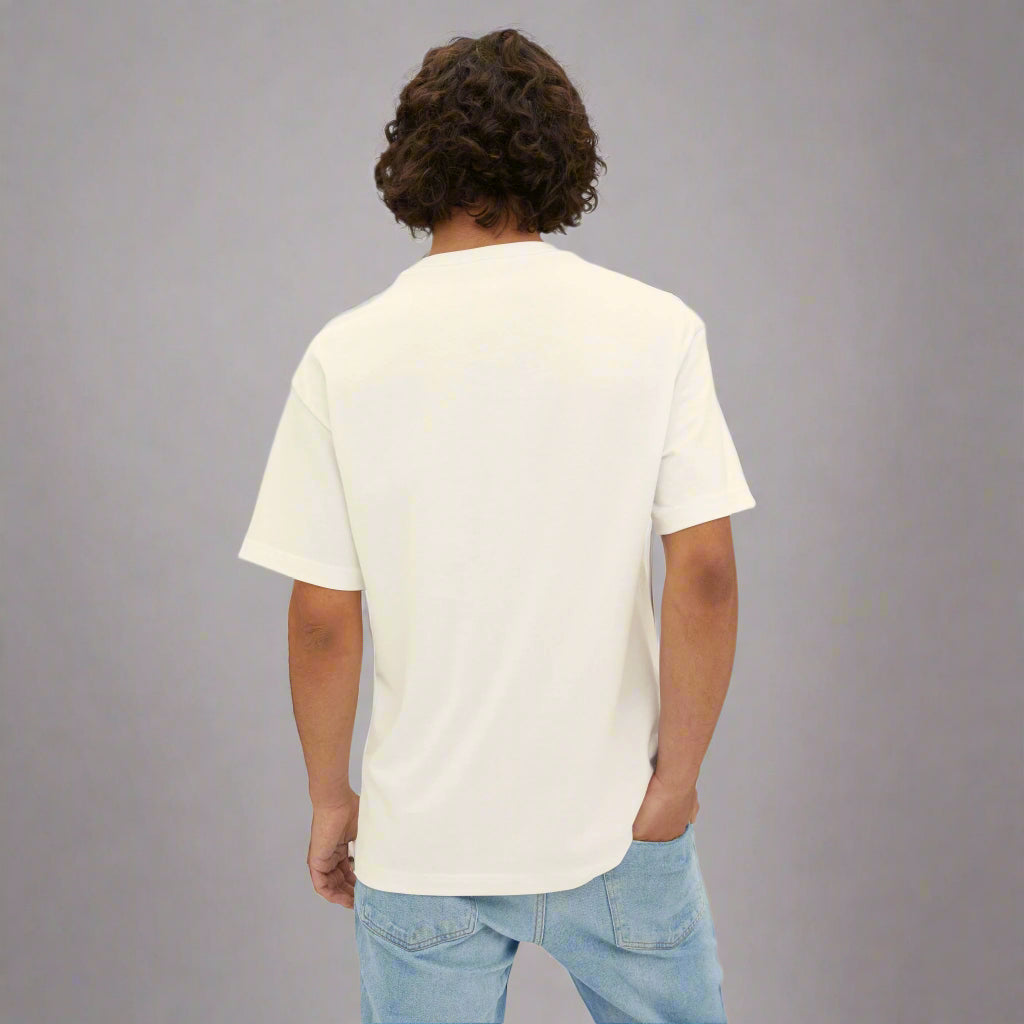

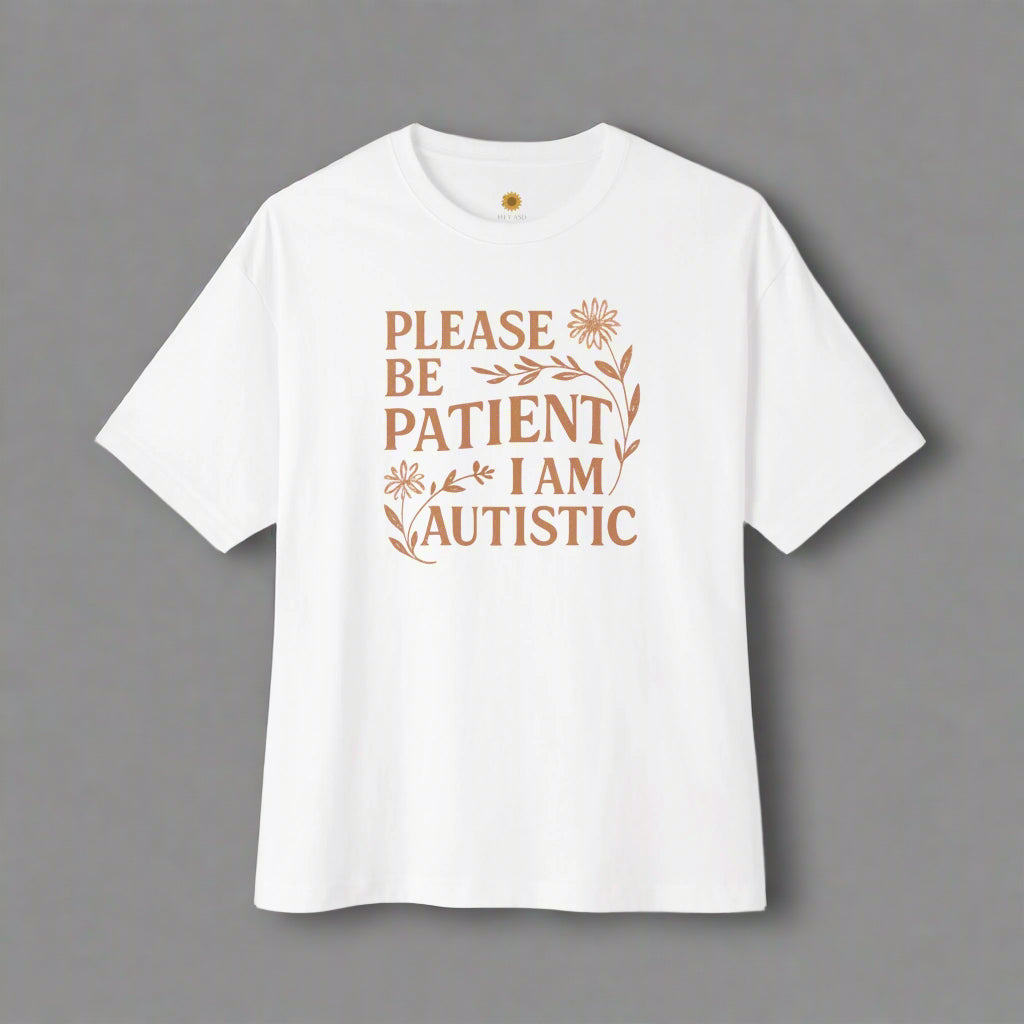


















0 comments